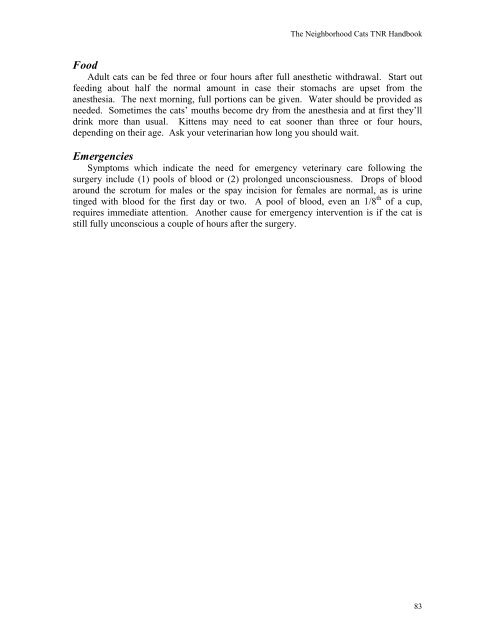You also want an ePaper? Increase the reach of your titles
YUMPU automatically turns print PDFs into web optimized ePapers that Google loves.
The <strong>Neighborhood</strong> <strong>Cats</strong> <strong>TNR</strong> <strong>Handbook</strong><br />
Food<br />
Adult cats can be fed three or four hours after full anesthetic withdrawal. Start out<br />
feeding about half the normal amount in case their stomachs are upset from the<br />
anesthesia. The next morning, full portions can be given. Water should be provided as<br />
needed. Sometimes the cats’ mouths become dry from the anesthesia and at first they’ll<br />
drink more than usual. Kittens may need to eat sooner than three or four hours,<br />
depending on their age. Ask your veterinarian how long you should wait.<br />
Emergencies<br />
Symptoms which indicate the need for emergency veterinary care following the<br />
surgery include (1) pools of blood or (2) prolonged unconsciousness. Drops of blood<br />
around the scrotum for males or the spay incision for females are normal, as is urine<br />
tinged with blood for the first day or two. A pool of blood, even an 1/8 th of a cup,<br />
requires immediate attention. Another cause for emergency intervention is if the cat is<br />
still fully unconscious a couple of hours after the surgery.<br />
83


